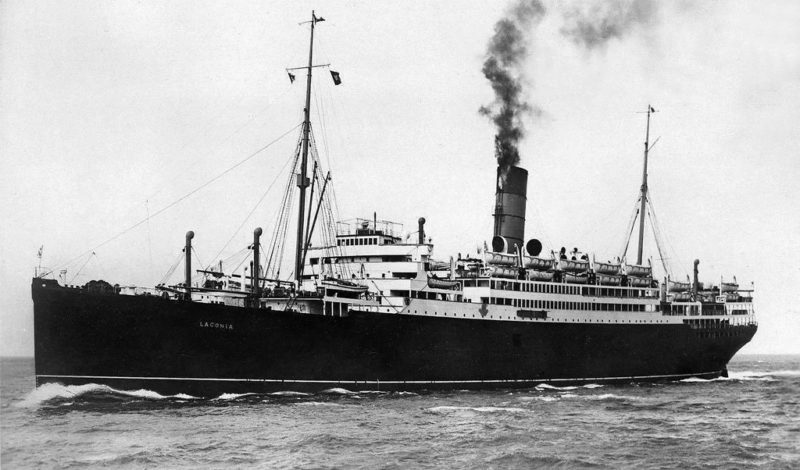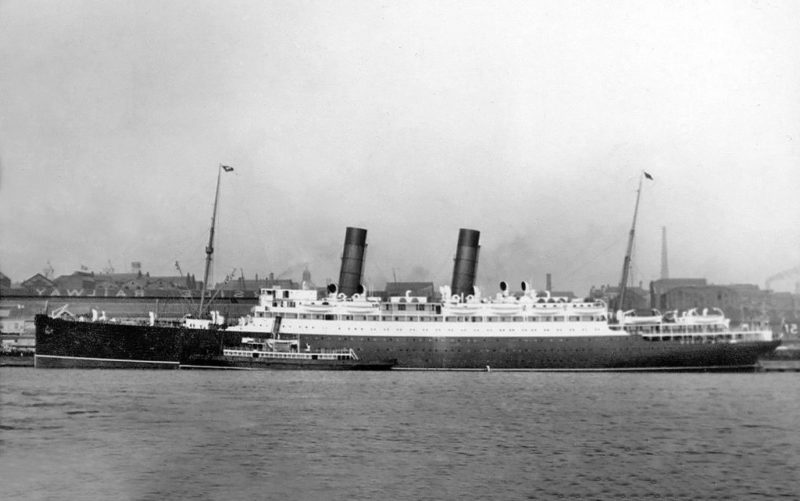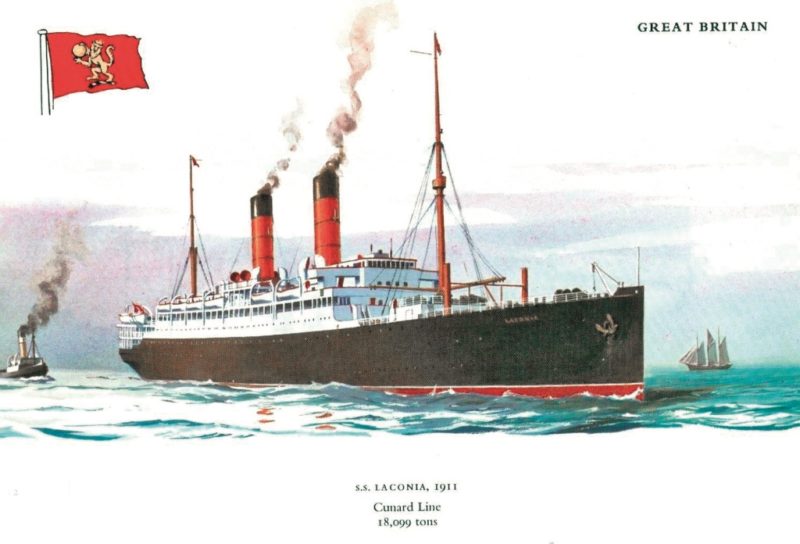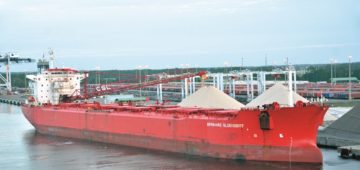
Laconia (Lakonia) is located on the south eastern part of Peloponnese peninsula of mainland Greece. It is bordered by Messenia to the west and Arcadia to the north.
It was also the name chosen for two Cunard passenger liners, one completed at the end of 1911, the loss of which would hasten the entry of the USA into the First World War. The second, completed just over ten years later, would change the orders for German U-boats in relation to the rescue of survivors from torpedoed ships and add to the evidence against alleged atrocities at the Nuremburg War Trials in 1946.
Laconia (Yard No 877) and her sister Franconia (Yard No 857) completed their maiden voyages in 1912 and 1911 respectively for Cunard Line’s Liverpool to New York/Boston service. The two liners appeared in the 1914 edition of Jane’s Fighting Ships as vessels capable of 18 knots and suitable for use as Armed Merchant Cruisers.
Both ships were just over 18,000 gross tons with a length of 625 feet a beam of 71 feet and a draught of 40 feet 6 inches. Two quad. 4–Cylinder steam engines driving two screws with an i.h.p. of 18,000 gave the ships a service speed of 17 knots. Swan, Hunter and Wigham Richardson built both vessels on the Tyne with engines by Wallsend Slipway Co. Ltd.

They were handsome twin funnelled vessels, able to carry 2,850 passengers in three classes.
Laconia was launched on the 27th July 1911 by the wife of the US Ambassador, Mrs Whitelaw Reid. The ship was delivered on the 12th December 1911, her maiden voyage commenced on 20th January 1912.

Franconia was taken into service as a troop transport early in 1915. On the 4th October 1916 she was torpedoed by the German U-boat UB-47, under the command of Kaptit. Walfgang Steinbauer, 195 miles east of Malta. There were no troops onboard and 12 crewmembers lost their lives with others being rescued by the hospital ship Dover Castle. UB-47 survived the war being surrendered at Venice on the 6th November 1918 and was scrapped the following year.
On the 27th October 1914 Laconia was hired as an Armed Merchant Cruiser and fitted with eight 6-inch guns, being commissioned as HMS Laconia on the 24th November 1914 at Liverpool.
The ship departed from Portsmouth on the 16th December 1914 carrying 3 Short Folder Type aircraft, destined for Durban. Laconia was based at Simonstown and operated off East Africa until April 1915 when she was used as a Headquarters ship for the operations to capture Tanga and the colony of German East Africa. She resumed patrol duties in September 1915 until replaced by the former P & O Liner Himalaya (6,898grt/1892) that had also been commissioned as an Armed Merchant Cruiser.
In June 1916 Laconia returned to the UK in a convoy carrying a large shipment of gold from Cape Town, before paying off at Devonport on the 2nd August 1916. She resumed Cunard’s North Atlantic Service on the 9th September.
On the 25th February 1917 the liner was en-route from the United States to Britain when she was torpedoed in the late evening by the German U-boat U-50, under the command of Kaptit. Gerhard Berger, six nautical miles north west of Fastnet.
Captain William Robert Duncan Irvine was master of the liner which was carrying $1million in securities from J.P. Morgan, 852 bars of silver, 132 boxes of silver coins, 5,400 sacks of mail, 4.5 million lbs. of empty shell cases, 3,000 tons of steel and 2,843 bales of cotton. Also onboard were 75 passengers and a crew of 217. The first torpedo struck on the starboard side just aft of the engine room. Twenty minutes later, as the ship was still afloat, a second torpedo struck the starboard side exploding in the engine room.

Subscribe today to read the full article!
Simply click below to subscribe and not only read the full article instantly, but gain unparalleled access to the specialist magazine for shipping enthusiasts.






Comments
Sorry, comments are closed for this item